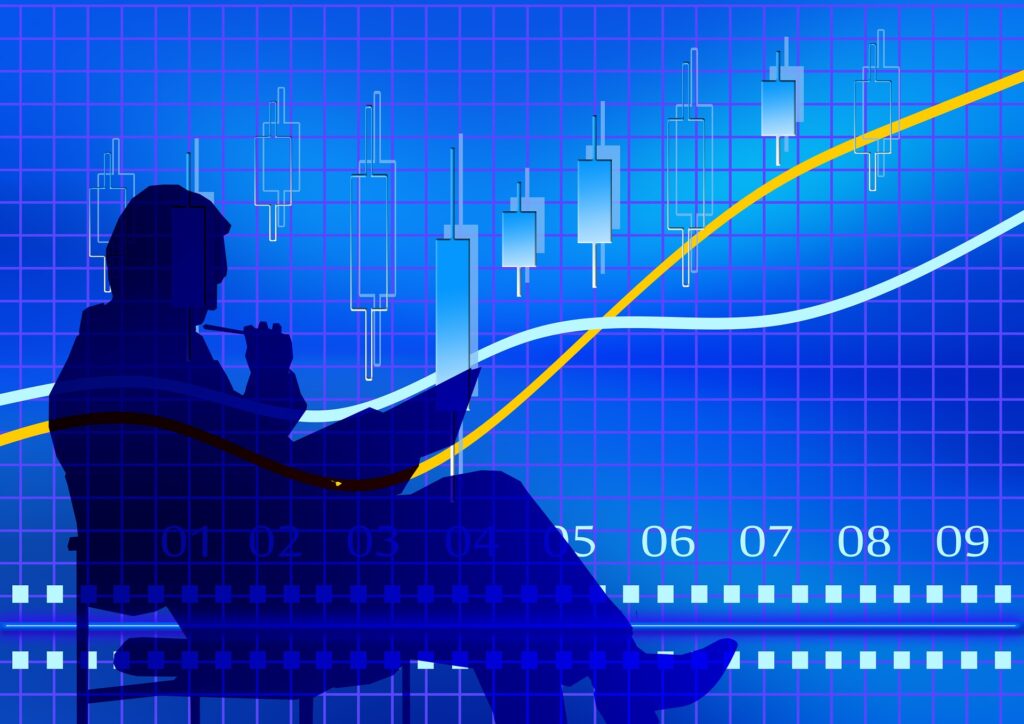At the core of data-driven trading lies the ability to gather and analyze vast amounts of information to inform your decision-making process. By harnessing the power of data analytics tools and techniques, traders can identify profitable niches, develop robust trading strategies, optimize risk management, and even explore the realm of automation and algorithmic trading. With data as your compass, you can adapt to market changes swiftly, seizing opportunities and mitigating risks effectively.
Join us as we unravel the significance of data in trading businesses, and explore the practical steps and strategies you can implement to unlock growth and profitability. Let’s embark on a journey of data-driven trading, where informed decisions become the cornerstone of success in the dynamic world of financial markets.
The Role of Data in Trading Businesses
In the complex and ever-changing landscape of trading, data plays a pivotal role in driving informed decision-making and maximizing profitability. Data serves as a compass, guiding traders through the volatile markets by providing crucial insights, patterns, and trends that are instrumental in formulating effective strategies.
At its core, the role of data in trading businesses is to empower traders with the ability to make data-driven decisions. By leveraging vast amounts of historical and real-time data, traders can gain a deeper understanding of market dynamics, identify opportunities, and anticipate potential risks. Data allows traders to move beyond guesswork and intuition, enabling them to base their actions on solid evidence and statistical analysis.
By analyzing historical market data, traders can identify recurring patterns, correlations, and anomalies that can inform their trading strategies. These insights can help traders determine optimal entry and exit points, identify profitable niches, and even develop predictive models for more accurate forecasting.
Choosing Profitable Trading Niches
To begin the process of choosing profitable trading niches, traders need to stay abreast of trending markets and sectors. By monitoring market trends, economic indicators, and global events, traders can identify emerging opportunities and areas of growth. This information serves as a foundation for narrowing down potential niches that align with the trader’s expertise, interests, and risk appetite.
Data analysis plays a pivotal role in evaluating the profitability of different niches. Traders can utilize various data sources and analytical tools to assess market demand, competition, and historical performance within specific niches. By analyzing historical data, traders can identify niches with consistent growth patterns, favorable risk-reward ratios, and low market saturation.
It is important for traders to consider the scalability and sustainability of chosen niches. While short-term opportunities may be lucrative, long-term viability is crucial for sustained success. Traders should assess factors such as market stability, regulatory environment, technological advancements, and consumer behavior trends to gauge the long-term potential of a niche.
Market Research and Data Collection
To begin with, traders must identify reliable and authoritative sources of market data. This can include financial news platforms, government reports, industry publications, and reputable market research firms. By accessing a diverse range of data sources, traders can gather comprehensive information to form a holistic view of the market.
Readymade Market Research Tools for Data Collection with Advance AI
Know More – Click Here
Data collection methods can vary depending on the trading niche and the specific research objectives. Traders can utilize both primary and secondary research techniques to gather relevant data. Primary research involves directly collecting data through surveys, interviews, or focus groups. This allows traders to obtain first-hand insights and opinions from market participants or potential customers. Secondary research, on the other hand, involves analyzing existing data sources such as historical market data, industry reports, or academic studies.

The advent of technology and data analytics tools has revolutionized market research and data collection processes. Traders can leverage advanced tools and software to automate data collection, process large datasets, and extract meaningful insights. Data visualization tools can also be employed to present data in a clear and visually appealing manner, facilitating better understanding and analysis.
Effective market research also involves staying updated with the latest news, economic indicators, and geopolitical events that may impact the markets. By monitoring real-time data and news feeds, traders can identify potential market-moving events and adjust their strategies accordingly.
Building a Data-Driven Trading Strategy
To build a data-driven trading strategy, traders need to start by clearly defining their objectives and risk tolerance. This helps in identifying the specific data points and metrics that are most relevant to their trading style and goals. Whether it’s analyzing price movements, volume trends, technical indicators, or fundamental factors, traders must determine the specific data elements that will inform their decision-making process.
The next step is to gather the necessary data from reliable sources. Traders can access a wide range of data, including historical market data, financial statements, economic indicators, and news feeds. It is important to ensure the quality and accuracy of the data collected, as the reliability of insights and analysis depends on the integrity of the underlying data.

Once the data is collected, traders can use data analytics tools and techniques to analyze and interpret the information. These tools enable traders to identify patterns, correlations, and trends that may not be apparent to the unaided eye. By applying statistical analysis and data visualization techniques, traders can gain deeper insights into the behavior of the markets and the assets they trade.
Continuous monitoring and analysis of data are essential to maintain and adapt the trading strategy. Markets are dynamic and constantly evolving, and traders need to stay updated with the latest data and market trends. By regularly reviewing and analyzing new data, traders can make necessary adjustments to their strategies to align with changing market conditions and seize emerging opportunities.
Risk Management and Data Analysis
Data analysis enables traders to assess the potential returns and the level of risk involved in a particular trade. By evaluating historical data, traders can set realistic profit targets and determine the maximum acceptable level of risk for each trade. This helps in optimizing risk-reward ratios and ensuring that the potential rewards outweigh the potential risks.
Data analysis also allows traders to identify and evaluate potential risk factors specific to their trading strategies or markets. By examining correlations, market indicators, and other relevant data, traders can assess the impact of different variables on their trading positions. This helps in understanding the potential risks associated with specific market conditions or events, allowing traders to adjust their strategies accordingly.
Backtesting and Optimization
Backtesting involves applying a trading strategy to historical market data to assess its performance. By simulating trades and analyzing the results, traders can evaluate how the strategy would have performed in past market conditions. This enables traders to assess the strategy’s profitability, risk management techniques, and overall suitability.
To conduct a backtest, traders need to define specific entry and exit rules, position sizing, and risk management parameters. Historical data, such as price data, trading volumes, and other relevant indicators, is then used to execute trades based on the defined rules. The outcome of each trade is recorded and analyzed to measure the strategy’s performance.

Backtesting allows traders to gain insights into the strategy’s strengths and weaknesses. By analyzing performance metrics, such as profitability, risk-adjusted returns, drawdowns, and win-to-loss ratios, traders can identify areas for improvement. They can fine-tune the strategy by adjusting parameters, optimizing timing, or implementing additional filters based on the historical data analysis.
Optimization involves systematically adjusting parameters and variables within a trading strategy to maximize its performance. Traders can use optimization techniques to find the optimal values for parameters such as stop-loss levels, profit targets, or indicator thresholds. By running multiple iterations of the backtest with different parameter values, traders can identify the combination that yields the best results.
However, it is important to exercise caution when optimizing a trading strategy. Over-optimization, also known as curve fitting, can lead to strategies that perform well on historical data but fail to deliver similar results in live trading. Traders should aim for a balance between performance on historical data and robustness to adapt to future market conditions.
Automation and Algorithmic Trading
Automation in trading involves the use of computer programs and systems to execute trades automatically based on predefined rules and conditions. Traders can set up trading platforms or utilize specialized software that can analyze market data, monitor price movements, and execute trades in real-time. This eliminates the need for manual intervention and allows for faster execution, especially in high-frequency trading scenarios.
Automation for Lead Generation and Crack Your Trading Business
Know More — Click Here
Algorithmic trading takes automation a step further by utilizing complex mathematical models and algorithms to make trading decisions. These algorithms can analyze vast amounts of historical and real-time data, identify patterns, and generate trading signals. Traders can design and implement their own algorithms or use pre-existing algorithms that are proven to be effective.
One of the key advantages of automation and algorithmic trading is the ability to execute trades with precision and consistency. Eliminating human emotions and biases, algorithms can make decisions based solely on objective data and predefined rules. This can help in minimizing errors and ensuring that trades are executed in line with the trader’s strategy.
Data Visualization and Reporting
Data visualization involves the use of charts, graphs, and other visual representations to present data in a way that is easily understandable and visually appealing. Traders can utilize various types of visualizations, such as line charts, bar charts, candlestick charts, heatmaps, and scatter plots, to analyze market trends, price movements, and other relevant data points.
It also aids in the identification of key performance indicators (KPIs) and metrics that are critical for assessing the effectiveness of trading strategies. Traders can create customized dashboards and reports that display important metrics, such as profitability, risk-adjusted returns, win-to-loss ratios, or portfolio diversification. This allows for comprehensive performance tracking and comparison against benchmarks or targets.
With advancements in technology, traders have access to a wide range of tools and platforms that facilitate data visualization and reporting. These tools often provide interactive features, allowing traders to drill down into specific data points, apply filters, and customize visualizations based on their preferences.
Evolving with Data: Adapting to Market Changes
Adapting to market changes also requires a mindset of continuous learning and experimentation. Traders should embrace the iterative process of testing new ideas, measuring outcomes, and adapting their strategies based on data-driven insights. By staying curious and open to new approaches, traders can uncover innovative trading techniques, explore alternative markets, or leverage emerging technologies to gain a competitive edge.
Technology plays a vital role in facilitating the adaptation process. Advanced trading platforms and tools provide access to real-time data, sophisticated analytics, and automation capabilities that enable traders to quickly respond to market changes. By utilizing these technologies, traders can streamline their decision-making processes, automate repetitive tasks, and focus on strategic activities that add value.
It’s important to note that adaptation requires a balance between agility and discipline. While it is crucial to adapt to changing market conditions, it is equally important to maintain a consistent and disciplined approach to trading. Traders should carefully evaluate the impact of any changes, assess risks, and ensure that modifications align with their overall trading objectives and risk tolerance.




